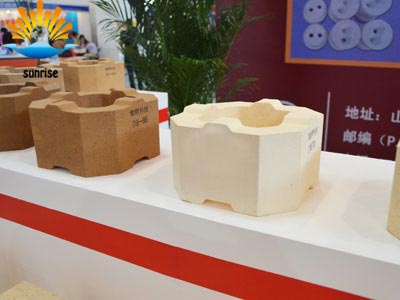Product Search
Quickly find the product you need
Products List
Refractory Knowledge
- Classification of mullite insulation bric
- Pollution and treatment in the production
- the development of the refractory brick i
- Aggregates Used For the Production of Ins
- The Use of Mullite Insulation Bricks
- Production Process Methods of Refractory
- Thermal Shock Resistant Fireproof Heat In
- Manufacturing process of fire clay insula
- Refractory material production process
- Pros and cons of lightweight mullite bric
Products List
- Phone:0086-370-63838939
- Email:sales@sunriserefr.com
- Office Address: No.36 Fengchan Road Of Zhengzhou, Henan, China (Mainland)
Introduction of mullite refractory materials
Date:2019-10-22 16:54 | From:Zhengzhou Sunrise Refractory | Author:admin
The mullite refractory material is a refractory product made of synthetic mullite as a raw material and having mullite as a main phase. When the Al2O3 fly content of the product is lower than the theoretical composition of mullite, it also contains a small amount of cristobalite. When the Al2O3 content is higher than the theoretical composition of mullite, it contains a small amount of corundum.
The high temperature creep of mullite products is superior to that of high alumina bricks produced from natural bauxite materials. Its high temperature performance is comparable to that of siliceous and magnesia products, and its resistance to acid and low alkali slag is better than that of magnesium. Quality products. There are two main types of mullite products: sintered mullite products and cast mullite products.
The production process of firing mullite products is similar to that of high-aluminum bricks. Synthetic mullite is used as pellets, fine powder is synthetic mullite, or white corundum, quartz powder and pure clay are used to make the equivalent of Mo A fine powder of stone. The granular material and the fine powder are proportioned, and the usual ratio is 45% to 55% of the granular material, and the fine powder (<0. 088 mm=55% to 45%). Mix well and then form high pressure. The firing temperature is from 1550 to 1600 ° C. When the fused mullite clinker is used as the pellet, the firing temperature should be greater than 1700 ° C.

The cast mullite brick is mainly made of high alumina bauxite or industrial alumina, clay or silica, melted in an electric arc furnace, recast and annealed, and its main mineral component is mullite.
Mullite products are mainly used for lining of various parts of thermal furnaces in industrial sectors such as steel, chemical, glass, and ceramics.

